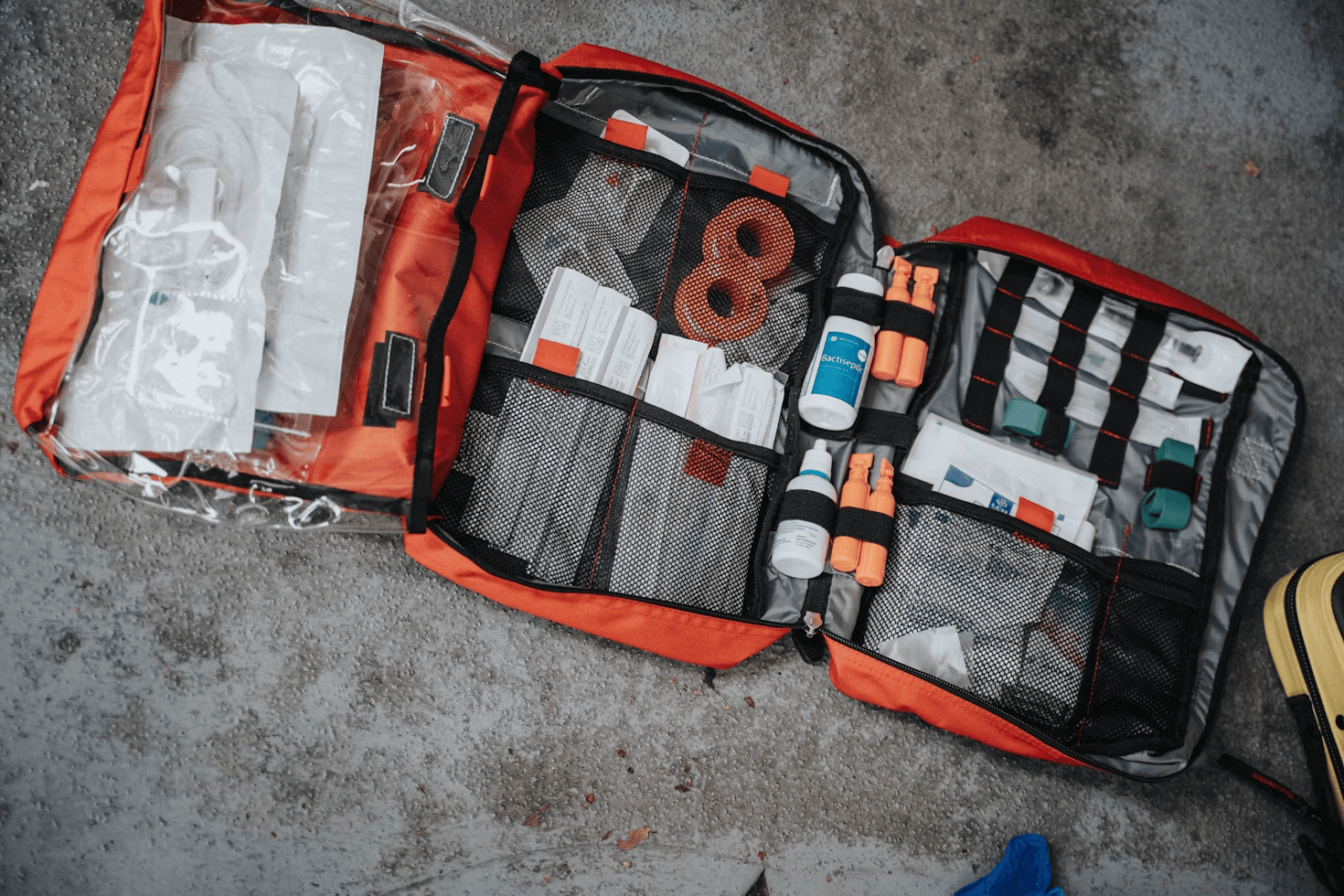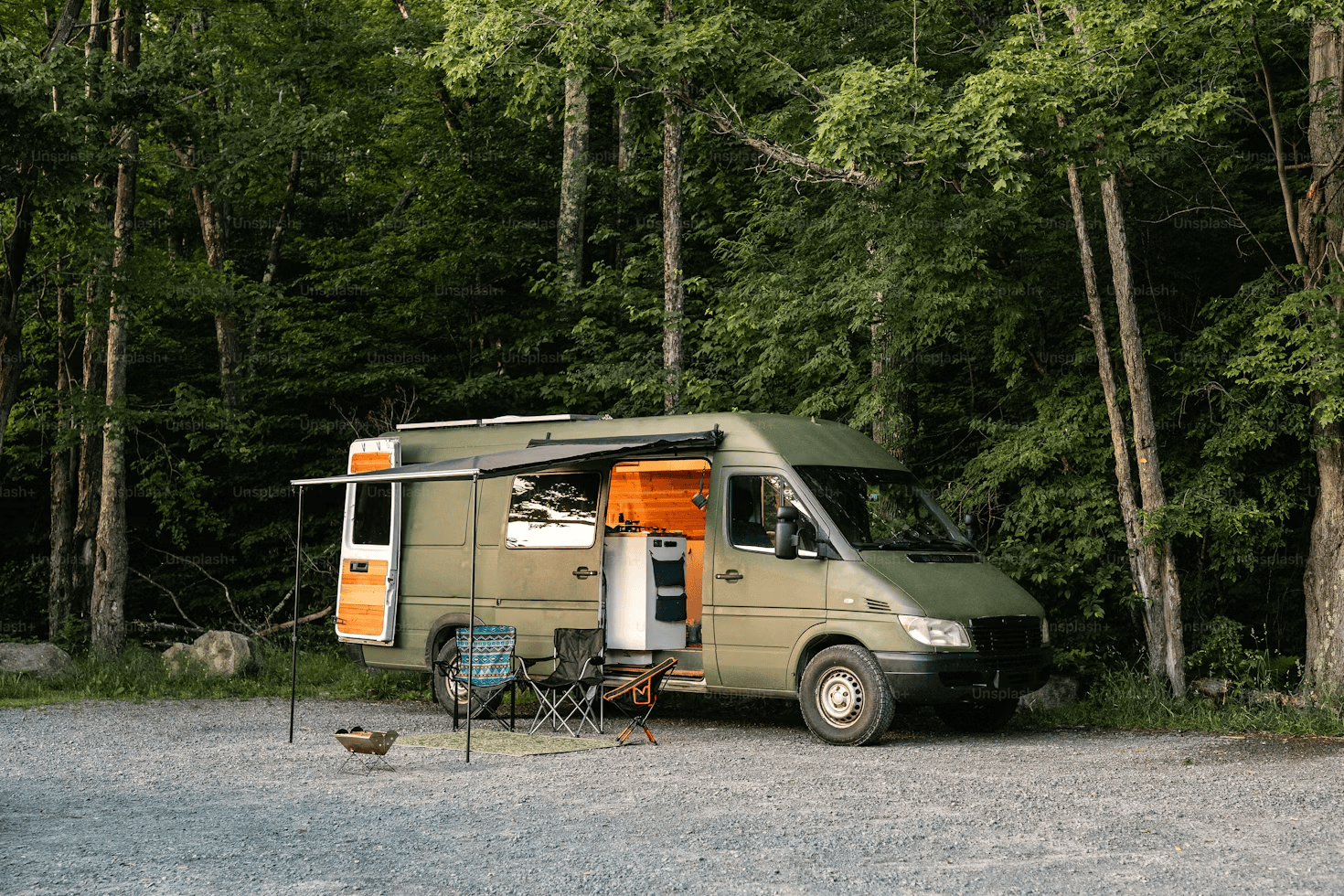Summer is the perfect time to hit the road and explore the great outdoors in your van. The warm weather and long days create an ideal setting for van camping adventures, allowing you to connect with nature and enjoy the freedom of the open road. However, along with the joys of summer camping come certain risks. High temperatures can lead to dehydration and heatstroke, while insects and wildlife become more active and can pose safety threats. From extreme heat and unpredictable weather to wildlife encounters and the need for proper food and water storage, being well-prepared is crucial. Ensuring safety not only enhances your experience but also protects you and your loved ones from potential hazards. This guide provides essential safety tips to help you enjoy a safe and memorable summer van camping trip.
When planning a journey in your van, prioritizing safety is key to ensuring a smooth and enjoyable trip. Below, we’ll outline the essential safety equipment you should pack and the necessary pre-trip inspections to perform on your van.
Essential Safety Equipment and Pre-Trip Inspections for Your Van
Essential Safety Equipment
1. First Aid Kit: A must-have in any vehicle, a comprehensive first aid kit should include items like bandages, antiseptic wipes, gauze, adhesive tape, pain relievers, allergy medicine, and emergency blankets. Regularly check and replenish it as needed.

2. Maps and GPS System: Even in the age of digital technology, a physical map can be a lifesaver when traveling through areas with poor cellular reception. Additionally, ensure your GPS is updated with the latest maps and software, offering a reliable navigation aid no matter where your adventure takes you.
3. Emergency Roadside Kit: This kit should contain tools and supplies in case of a breakdown, including jumper cables, tire inflator or sealant, warning triangles, a flashlight with extra batteries, and a multi-tool. Having these items can help you manage minor repairs or signal for help if needed.
4. Communication Device: In addition to your smartphone, consider a backup power bank or a satellite phone if you’re venturing into areas with unreliable mobile service. This ensures you can call for help if required.
Pre-Trip Inspections for Your Van
1. Tires: Inspect the tires for adequate tread depth and no signs of damage. Check the air pressure with a gauge and adjust it according to the manufacturer’s recommendations.
2. Fluid Levels: Before setting out, check your van’s oil, coolant, brake, and windshield washer fluids. Top them off if they’re low to ensure all systems function optimally.
3. Brakes: Listen for any noises or feel for changes in the brake response. If something seems off, it’s safer to have them checked by a professional mechanic before you depart.
4. Lights and Signals: Test all interior and exterior lighting, including headlights, tail lights, brake lights, and turn signals. Proper working lights are essential for safe driving, particularly at night or in poor weather conditions.
5. Battery: Ensure the battery is fully charged and that the connections are clean, tight, and corrosion-free.
Preparing your van with essential safety equipment and conducting thorough pre-trip inspections are critical steps to ensure your safety on the road. These measures not only help prevent accidents but also minimize the inconvenience of mechanical failures. Remember, taking the time to prepare today can help you enjoy a safer, more relaxed travel experience tomorrow.
Having discussed the importance of equipping your van with essential safety gear, it’s equally crucial to consider environmental safety factors and make thorough preparations in advance. Understanding and planning for the natural conditions you’ll encounter can significantly enhance your safety and enjoyment during your summer van camping trip.
Preparing for Environmental Safety
Checking the Weather Forecast
Understanding the weather forecast is crucial both before and during your trip. Here’s why:
- Preparation: Knowing the weather ahead of time allows you to pack appropriately, whether you need rain gear, extra layers for cold conditions, or lightweight clothing for heat.
- Safety Decisions: Severe weather conditions such as storms or extreme temperatures can turn dangerous. A timely check helps you decide whether to continue, postpone, or modify your plans.
- Adaptability: Keeping an eye on weather updates during your trip enables you to adapt to changing conditions, ensuring your safety and comfort.
Staying Hydrated
Hydration is key to maintaining your health and safety in any climate, but it’s especially important in hot or dry environments. Here’s how to stay hydrated and recognize dehydration:
- Regular Fluid Intake: Drink water regularly, not just when you’re thirsty. Thirst is already a sign of dehydration.
- Electrolyte Balance: In intense heat or during vigorous activity, supplement water with electrolytes to replenish what you lose in sweat.
- Recognizing Dehydration: Be aware of dehydration symptoms, including dizziness, dry mouth, lethargy, and dark-colored urine. Early recognition and response are essential to prevent more serious health issues.
Sun Protection

Protecting yourself from the sun helps prevent sunburns and heat-related illnesses such as heat stroke. Here are effective sun protection strategies:
- Sunscreen: Apply a broad-spectrum sunscreen with at least SPF 30. Reapply every two hours, or more often if you’re swimming or sweating.
- Protective Clothing: Wear light, loose-fitting clothing that covers as much skin as possible. Fabrics with UV protection offer additional safety.
- Headwear: A wide-brimmed hat protects your face, ears, and neck from the sun.
- Timing: Avoid outdoor activities during peak sun hours, typically between 10 a.m. and 4 p.m. If you must be outside, seek shade whenever possible and take frequent breaks.
By incorporating these practices into your planning and daily activities, you can significantly improve your environmental safety. Whether you’re hiking, camping, or simply enjoying a day at the beach, being prepared allows you to focus on enjoying your adventure while staying safe.
After considering environmental safety factors, it’s also important to turn our attention to protecting yourself from insects while outdoors. Taking the right precautions can help you avoid bites, stings, and the discomfort they bring, ensuring a more enjoyable camping experience. Here are some essential tips to protect yourself from insects while van camping:
Protect Yourself from Insects Outdoors

Understand Common Wildlife and Insects
Being aware of the types of insects and wildlife common to your camping area is the first step in staying safe. Here’s how to prepare:
- Research Local Insects: Identify the most common insects, such as mosquitoes, ticks, and bees, in the area you’ll be visiting. Knowing what to expect can help you take appropriate precautions.
- Use Insect Repellents: Apply insect repellent containing DEET, picaridin, or oil of lemon eucalyptus to exposed skin and clothing. These repellents are effective at keeping most insects at bay.
- Wear Protective Clothing: Long sleeves, long pants, and closed-toe shoes provide a physical barrier against insect bites. Light-colored clothing can make it easier to spot ticks and other insects.
- Set Up Defenses: Use mosquito nets or screens in your van and around your camping area. Citronella candles and portable insect traps can also help reduce the number of insects around your campsite.
Avoid Leaving Food Residue at Camp
Keeping your campsite clean is crucial for minimizing the attraction of insects and wildlife. Here are some tips:
- Store Food Properly: Keep all food in sealed containers or coolers. Avoid leaving food or trash out in the open, as it can attract insects and animals.
- Clean Up After Meals: Immediately clean up any food residue, spills, and trash after eating. Dispose of waste in designated bins or take it with you to avoid attracting insects.
- Avoid Scented Products: Avoid using heavily scented lotions, perfumes, or soaps, as these can attract insects.
Treating Insect Bites and Stings
Even with the best precautions, insect bites and stings can happen. Here’s how to prevent and treat them:
- Preventive Measures: In addition to using repellents and protective clothing, avoid areas with high insect activity, such as stagnant water or dense foliage, especially during dawn and dusk when mosquitoes are most active.
- Immediate Treatment: If you get bitten or stung, clean the area with soap and water. Applying a cold pack can reduce swelling and discomfort.
- Use Topical Treatments: Over-the-counter creams, such as hydrocortisone or calamine lotion, can help relieve itching and irritation. Antihistamines can also be taken to reduce allergic reactions.
- Monitor for Allergic Reactions: In case of severe reactions, such as difficulty breathing, swelling of the face or throat, or a rapid heartbeat, seek emergency medical attention immediately.
While shielding yourself from insect bites is a key part of outdoor safety, ensuring the security of your food and water supplies is equally critical when setting up camp. As you transition from personal protection to the essentials of campsite management, adopting robust strategies for food and water safety not only enhances comfort but also guards against potential health hazards in the wilderness. Here are some tips to help you store food properly and maintain clean drinking water:
Tips for Keeping Your Food and Water Safe
1. Proper Food Storage
Storing food correctly is essential to prevent spoilage and avoid attracting wildlife to your campsite. Here are some strategies:
- Use Sealed Containers: Store all food in airtight containers or zip-lock bags. This helps keep food fresh longer and reduces odors that might attract animals.
- Cooler Management: Keep perishable items in a cooler with plenty of ice or ice packs. Make sure the cooler is well-insulated and kept in a shaded area to maintain a low temperature.
- Separate Raw and Cooked Foods: To prevent cross-contamination, always store raw meats separately from cooked foods and ready-to-eat items. Use separate containers and consider having two coolers if space allows.
- Dispose of Trash Properly: Seal all food waste and packaging in trash bags and store them in bear-proof containers or inside your van until you can dispose of them properly. Never leave trash out overnight.
- Clean Up Thoroughly: After meals, clean all cooking utensils, dishes, and surfaces to remove food residues. This helps minimize odors that could attract wildlife to your campsite.
2. Clean Drinking Water
Having access to clean drinking water is vital for your health and well-being while camping. Here’s how to ensure your water is safe:
- Bring Enough Water: Start your trip with plenty of bottled or treated water. Plan for at least one gallon per person per day for drinking and basic needs.
- Water Purification Methods: If you need to use natural water sources, make sure to purify the water before drinking. Here are some common methods: boiling, filtration, chemical treatments, UV purifiers.
- Water Storage: Store purified water in clean, sanitized containers. Make sure the containers are sealed tightly to prevent contamination.
By properly storing your food and ensuring access to clean drinking water, you can greatly reduce the risk of foodborne illnesses and wildlife encounters. These precautions will help you enjoy a safer and more comfortable van camping trip. However, beyond mere these preparations, it’s equally important to be equipped with effective strategies for responding to emergencies. Knowing how to react swiftly and efficiently when the unexpected occurs can make a significant difference in mitigating risks and ensuring safety.
Effective Strategies for Handling Emergencies
1. Emergency Response Plan
An effective emergency plan provides clear steps to take when a crisis arises, ensuring safety and minimizing chaos. Here’s what to include in your plan:
- Assess and React: Train yourself and your group to assess the situation quickly. Identify if it’s safer to evacuate or shelter in place. Have an escape route and a safe meeting point pre-determined.
- First Aid Training: Basic first aid knowledge is crucial. Knowing how to handle minor injuries, perform CPR, or treat shock can save lives before professional help arrives.
- Disaster-Specific Preparedness: Tailor your emergency plan to specific risks associated with your location or activity, such as earthquakes, floods, or fires.
- Regular Drills: Conduct regular practice drills to ensure everyone knows their role and can act confidently under pressure.
2. Communication Plan
Maintaining the ability to communicate during an emergency is vital. Here’s how to create an effective communication plan:
- Emergency Contacts: Have a list of emergency contacts, including local authorities, medical facilities, and family members. Ensure everyone in your group has access to this list.
- Stay Informed: Keep a battery-powered or hand-crank radio to receive updates from weather stations and local news. In the digital age, mobile apps can also alert you to nearby dangers.
- Backup Communication Tools: In case cell towers are down, consider alternative communication methods such as satellite phones or two-way radios.
- Communication Protocols: Establish clear protocols about who communicates what and to whom in an emergency. Designate a person as the primary communicator to avoid misinformation.
By having a robust emergency plan and a reliable communication strategy, you can enhance your preparedness for unforeseen events. These plans not only help in effectively managing the situation but also in ensuring the safety and well-being of everyone involved. Always review and update your strategies regularly to adapt to new threats and incorporate learning from past incidents.
Conclusion
The essence of a successful outdoor van camping trip in the summer lies in preparedness. By equipping yourself with the necessary tools, knowledge, and strategies, you ensure not just your own safety but also a more enjoyable and memorable experience. Remember, the best trips are those where safety and fun go hand in hand, allowing you to explore the great outdoors with confidence and peace of mind.